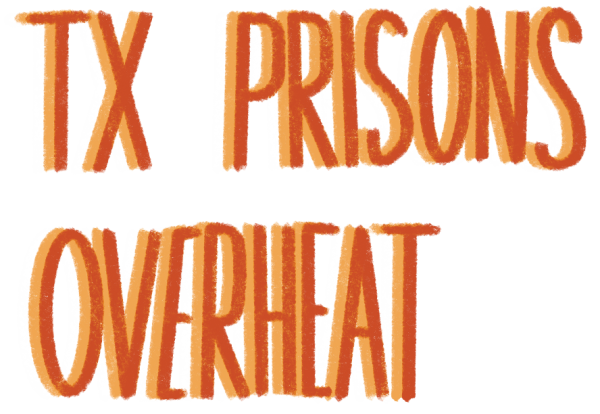Staff Stance: Gerrymandering Strikes Again: Texas Legislators Push Partisan Redistricting Plan
December 17, 2021
Every 10 years, the Texas legislature redraws congressional districts—or districts that a state is divided into in which one member of the national House of Representatives is elected. In theory, this is meant to account for demographic changes in the population, but in practice it has only acted as a weapon used to diminish the voting power of the minority party.
Gerrymandering, or the purposeful act of arranging political districts in a way that gives a political party an unfair advantage in elections, is at the heart of this decade’s redistricting plan that was approved on Oct. 15 by Governor Gregg Abbott. Redistricting is a complicated process, especially in a state like Texas. The population is centralized in its cities compared to its spread out rural areas, so district shapes are bound to look a little strange, yet the approved plan still blatantly stifles minority voices in order to protect the party drawing the lines.
The Equal Protection Clause in the Supreme Court case Reynold v Sims (1964) required “equal legislative representation for all citizens in a State regardless of where they reside.” The new congressional map poses a threat to this idea, as it fails to give individuals a fair say in who represents them in government. For example, while the new districts do reinforce Democratic strongholds, racial demographic groups are forced into carefully calculated and concentrated areas for their voting impacts to be minimized.
According to the Texas Tribune, people of color have made up 95% of the population growth in Texas, and right now 39% of the population is Hispanic, which is extremely close to the 41% white population. Based on these statistics, it would be reasonable to assume that the new map would add additional Hispanic opportunity districts, or districts where some majority voters vote with racial minorities to elect the minority-preferred candidate. However, the resulting map didn’t represent the demographic changes in the last decade, but instead a sweeping and glaringly obvious suppression of minority voters. The plan gives white populations 23 majority districts, Hispanics 7 (despite there being an almost equal number of Hispanic and white voters), and not a single opportunity district for Black or Asian voters.
According to Texas State Senator Sarah Eckhardt (D-14), the Democratic push to question these maps was ineffective because the maps had intentionally been drawn not by the Republicans sponsors themselves, but by law firms that held an attorney-client privilege with the sponsors. When asked if they considered race in the drawing of the maps, the Republican sponsors of the map could truthfully deny having done so because they had been drawn behind the veil of a law firm. The implications of this on democracy are deeply unsettling, as it makes confrontation between parties less transparent and less productive. Texas has gotten notably more Democratic to the point that 52% voted for Donald Trump and 46% voted for Joe Biden in the last presidential election, which isn’t at all represented proportionally by the 23 red districts and 13 blue districts. The methods used to draw them show that unless changes in regards to gerrymandering are made, those in power can and will stay in power, even if it doesn’t reflect what their own constituents want.
This is not to say that gerrymandering doesn’t happen on both ends of the political spectrum. Both parties are always seeking ways to gain certain advantages to pursue their own agendas, but when it comes to redistricting, it’s important that citizens can make a real difference with their vote. The fact that state legislatures generally oversee the redistricting of their own state means that whichever party is in power at that time is going to protect what they have. This is why a third-party, non-partisan redistricting commission could be helpful, as they would ideally be drawing the lines in ways that best reflect community interests instead of trying to diminish the voting power of certain groups and attempting to overrepresent another.
A growing number of states have been dipping their toes into this possible solution to gerrymandering. For example, according to a New York Times analysis, the 2001 and 2011 maps of Arizona drawn by an independent commission produced some of the most competitive races in the country because the standard for independent redistricting commissions is to be as nonpartisan as possible. In 2014, the race of two of Arizona’s districts out of 29 nationwide were decided by less than 5% of the vote. In theory, competitive districts would mean less political polarization, and candidates would be forced to appeal to voters on both sides of the aisle. Competitive districts would also likely increase voter turnout compared to if districts were always skewed to one side.
These new congressional districts are to stay in place for the next 10 years; they will determine the magnitude of our voices for the next 10 years. These are the districts in which every high schooler—and even middle schooler—right now will vote once they’re eligible. Democracy should mean that a liberal’s vote in Austin has the potential to have as much influence as a conservative’s vote in Bastrop; it should mean that a white person’s vote in Hays County matters as much as a Hispanic person’s vote in Bexar County. The new congressional districts ensure that the votes of racial minorities have less of an influence, which jeopardizes many aspects of a functioning democracy. The new districts in Texas and nationwide should be looked at with scrutiny through the constitutional lens of one person, one vote instead of settling for incumbent protection and party bolstering.







